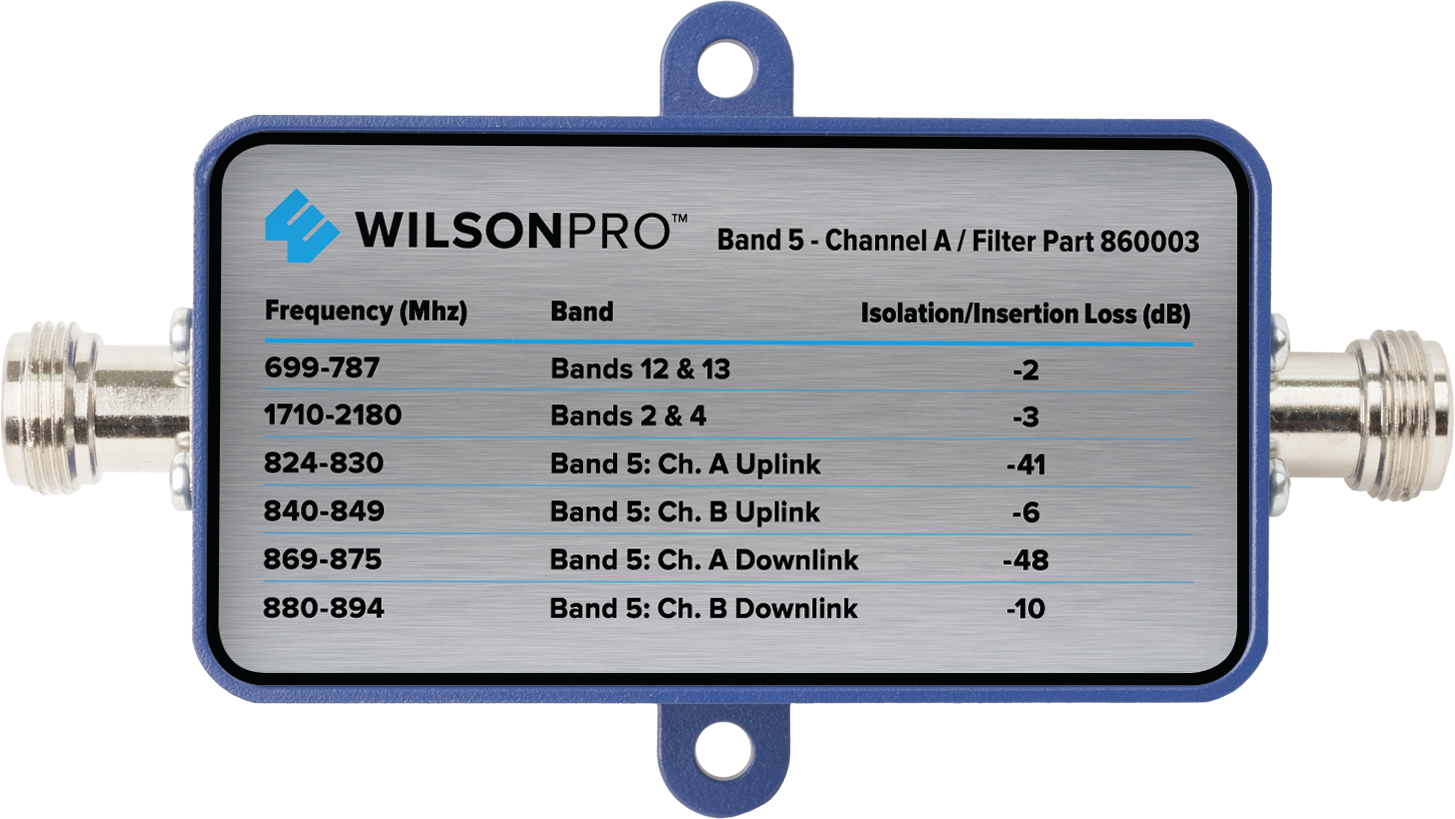Channelized Filter: Band 5 Channel A Filter (N Connector) | 860003
Your Order Includes:
- 90-Day Returns
- Lifetime Tech Support
- 2-Year Warranty
- Lowest Price Guarantee
How to Choose the Right Antennas for Your Booster
Outside Antennas:
- Yagi Directional Antenna: This antenna is more powerful because it focuses on sending and receiving signals in one direction. It works best when there are no major obstacles blocking its path to the cell tower. It's not ideal for areas with large obstructions like hills or buildings.
- Omni Antenna: This antenna sends and receives in all directions, so it's better for hilly areas or if you need to support multiple carriers with towers in different directions. It doesn’t need to be aimed, but it also isn’t as strong as the Yagi antenna.
- High Gain LPDA Antenna: Perfect for areas with very weak signals, this antenna significantly boosts signal strength. It needs a clear line of sight to the cell tower and requires a sturdy mount because of its size.
- High Gain Omni Antenna: Similar to the standard omni, this antenna receives signal from all directions but delivers significantly higher gain across all supported bands. It’s a much stronger option when you want more inside coverage than a standard omni will provide, especially in areas with weaker outside signal.
Inside Antennas:
- Panel Antenna: Can be placed on walls or ceilings and directs the signal towards a specific area. This antenna is great for homes and tall ceilings in buildings.
- Standard Dome Antenna: Designed to be mounted on the ceiling, this antenna spreads the signal evenly throughout the area. It's best suited for drop ceilings or spaces where cables can be run above the ceiling.
- Ultra-Thin Dome Antenna: This slim antenna also mounts to the ceiling, but is much is less noticeable. It's much stronger than a standard dome antenna, making it a great choice for places where both looks and signal strength are important.
Tips for Choosing:
- Choose Omni Antennas for general coverage with no aiming required.
- Choose Directional Antennas (Yagi or LPDA) when you can point directly at a cell tower and need stronger signal and more inside coverage.
- Interior Size Considerations: One antenna per 750-1,500 sq ft in homes, or 1,500-2,500 sq ft in open spaces like offices and warehouses.
Product Overview
Product Overview
The Channelized Filter: Band 5 Channel A Filter (N Connector) | 860003 is meticulously designed to fine-tune the performance of your signal boosting system. By targeting Channel A, Band 5, it effectively reduces interference and enhances signal clarity within this specific frequency range. This precision ensures that other channels continue to transmit with minimal attenuation, promoting a seamless flow of desired signals. Ideal for users looking to isolate particular frequency bands, the filter focuses on the Downlink frequency range of 869-875 MHz and the Uplink frequency range of 824-830 MHz, enhancing the clarity and effectiveness of communication.
- Enhanced Clarity: Offers maximum attenuation in Channel A, Band 5 to minimize interference.
- Maintains Signal Integrity: Allows other channels to pass through with minimal attenuation, preserving the strength of desired signals.
- Specific Frequency Focus: Targets the Downlink range of 869-875 MHz and the Uplink range of 824-830 MHz for precise signal management.
- Improved System Performance: Ideal for users needing to enhance signal booster effectiveness through targeted frequency isolation.
Specifications
Specifications
-
SKU860003
-
UPC811815026198
-
ConditionNew
-
ConnectorN-Female


